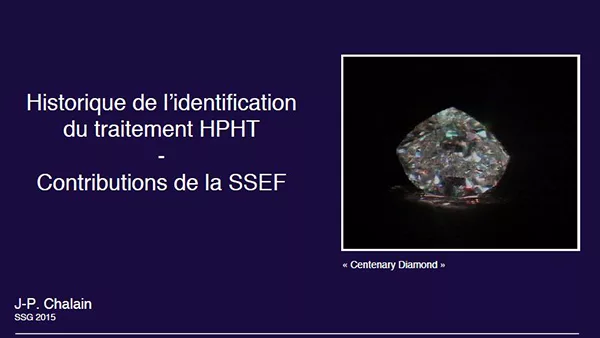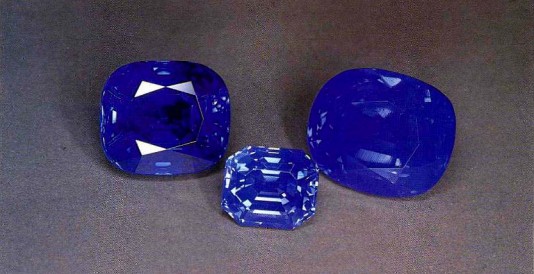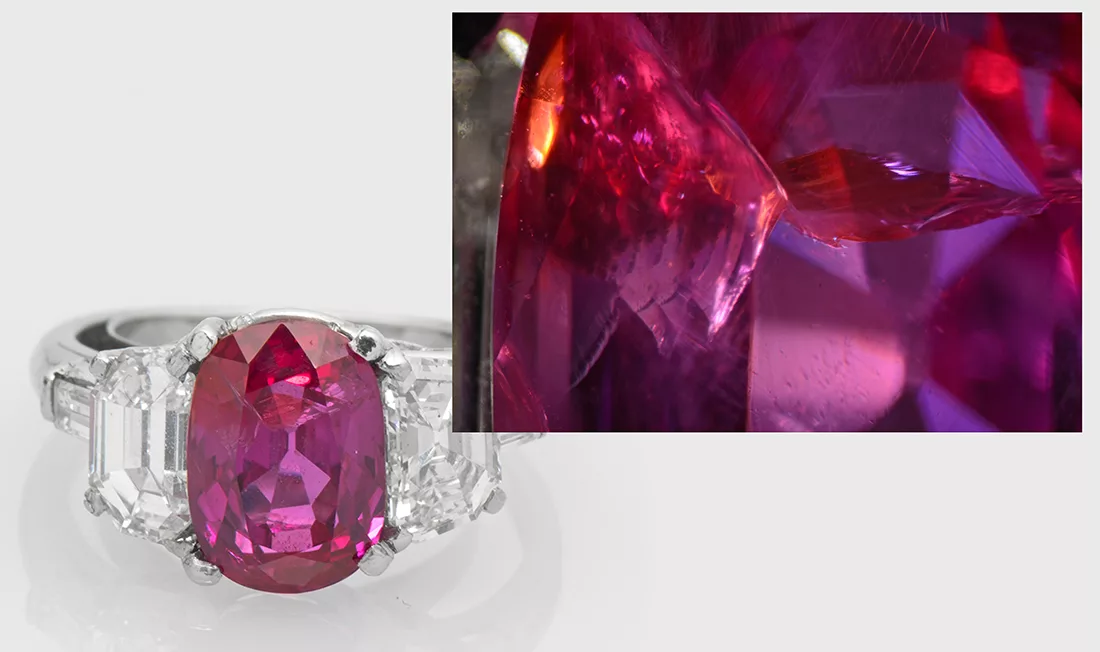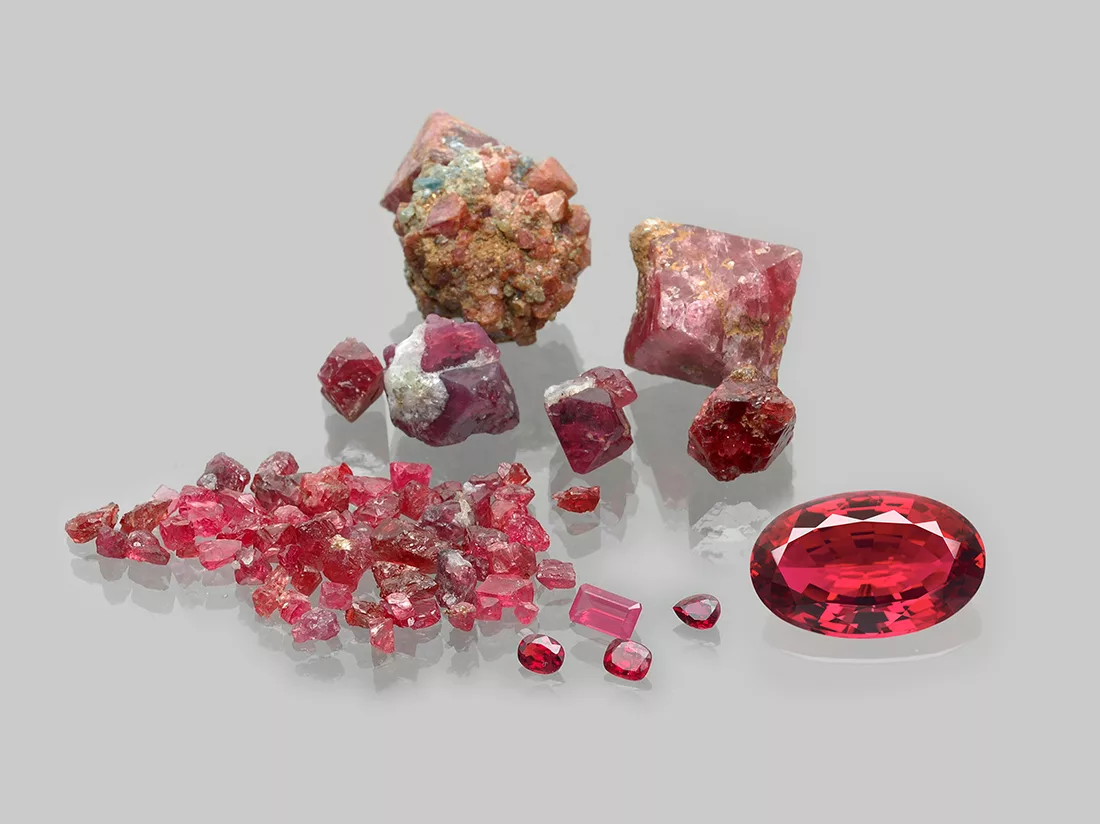
Spinel from Mahenge (Tanzania) and its Heat Treatment
first published in Facette 22 (February 2016)
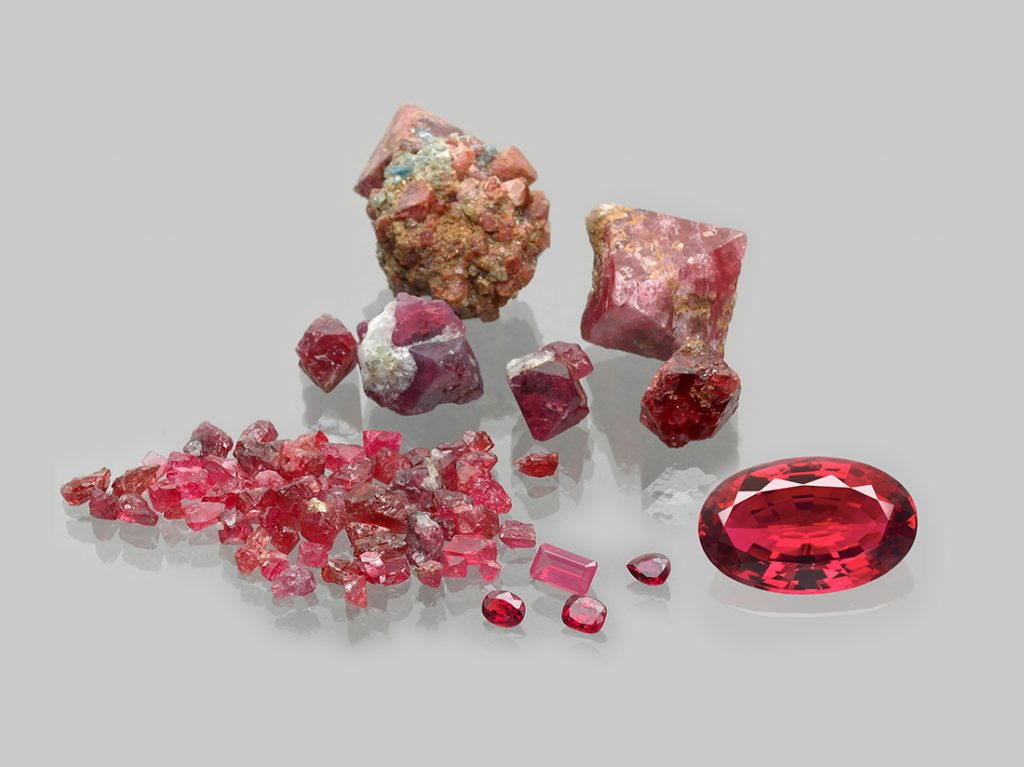
In 2007, the discovery of a huge pinkish-red spinel crystal of 52 kg in the carstic marbles at Ipangko south of Mahenge (Tanzania) resulted in a sudden supply of spinels (up to 100 cts) of a vibrant pinkish-red colour, which immediately mesmerized the market.
Apart from visiting this gem deposit in 2009 for a geological study, the Swiss Gemmological Institute SSEF has had the privilege of analysing some of the most outstanding spinels from this gem deposit in recent years, including a highly attractive specimen of 104 ct (Figure 1).

In contrast to corundum, for which heat treatment is highly effective to improve colour and clarity and thus applied on large numbers of stones, heated spinels are still very scarcely found in the market. This is due to the fact that there is commonly none to only minor clarity improvement achieved through heat treatment (Seaseaw et al. 2009, Smith 2012).
From the spinels analysed by the SSEF in the past few months, only very few were found to be heat-treated. These spinels from Tanzania of 7 ct and 8 ct both showed an attractive pinkish-red colour, but were characterised by tiny dispersed inclusions. Similar to heated corundum, both specimens contained few heat-induced atoll-like discoid tension fractures. But as they were very small, an untrained gemmologist may easily overlook them. However, the photoluminesence spectra of both spinels were characterised by a distinct broadening of all chromium emission bands and a shift of the main emission line (to 687 nm), well-established criteria for the detection of heat treatment of spinel (Saeseaw et al. 2009, Smith 2012).
